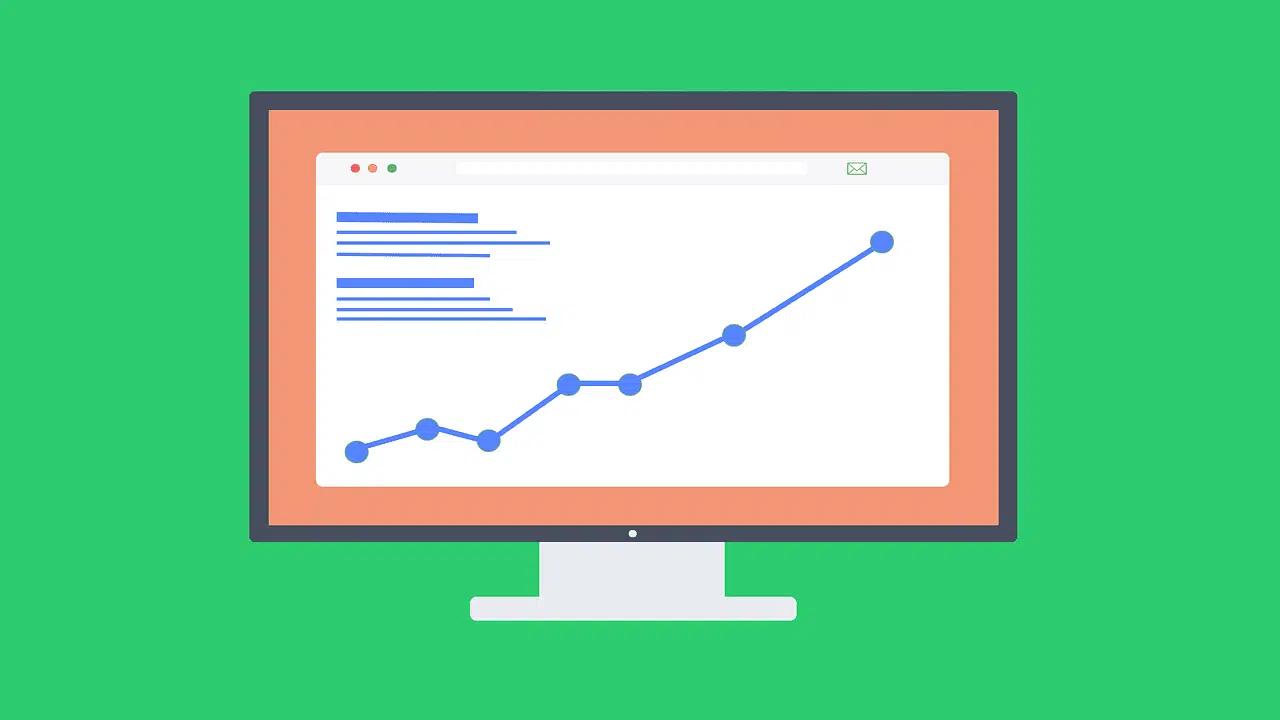You’ve done your research and decided that dropshipping is the best business model for you. Next, you’re probably feeling both excited and overwhelmed at the thought of setting up your new dropshipping business. Starting any new venture comes with its own challenges and pitfalls, and dropshipping is no different. Fortunately, this guide will help you make sense of how to set up a dropshipping business. Along the way, you’ll learn about the best apps for dropshipping to make the process easier and more efficient. As you read this guide, you may feel like you’re just looking for information on how to set up a dropshipping business. But there’s a good chance that you’ll find an even better solution to your problem: PagePilot’s AI page builder. This app creates fast, conversion-focused pages for your dropshipping business. Instead of agonizing over how to set up a dropshipping business, you can focus on using the best apps for dropshipping to help you run your store.
How Dropshipping Works

Dropshipping is a type of retail fulfillment business that outsources production, warehousing and shipping to a third-party supplier. If you dropship some or all of your products, you don’t stock or fulfill those items yourself. When you receive customer orders, you route them directly to manufacturers or wholesalers for direct shipment to customers. You don’t pay for the items until they are purchased by your customers. This arrangement can be a win-win for everyone involved.
- Sellers can focus on curating and promoting items, rather than managing inventory and warehouses.
- Suppliers get to focus on making and delivering goods without needing a retail operation.
- Shoppers gain access to products they may not be able to find at their local store.s
Understanding the Dropshipping Business Model
Dropshipping can be a quick way to start a business, with minimal upfront costs and low risk. The process involves partnering with third-party suppliers – whether they are manufacturers, wholesalers, or retailers – who handle product creation and fulfillment. In essence, dropshipping relies on effective supply chain management. The supplier produces and ships the products while we focus on marketing and customer service. Here’s a simple breakdown of the dropshipping process:
- A customer places an order on our online store.
- We forward the order details to our supplier.
- The supplier ships the product directly to the customer, and we keep the profit from the difference between the purchase and sale price.
Related Reading
- Best Apps For Dropshipping
- Is Dropshipping Still Profitable
- How To Start Dropshipping For Free
- Where To Buy Dropshipping Products
- Is Amazon Dropshipping Profitable
- How To Find Dropshipping Products
How to Set Up a Dropshipping Business in 10 Steps

1. Choose a Niche Market
Drop shipping companies and websites have become saturated in some industries. This is especially seen in markets that offer generic items such as baby clothing or kitchen utensils. In order to stand out and increase your chances of generating sales, it’s best to enter into a niche market. This way you will have an easier time standing out from the competition as well. That thing that sets you apart could be what propels your business forward.
2. Determine Your Target Audience
Consider the audience you intend to reach with your drop shipping company. Determine the age range, gender, location, and any other relevant descriptors for the prospective users you want to go online. Once you have a target audience in mind, it is much easier to move forward. Regardless of whether you’re handling clothing, electronics, or something else, you will have an easier time as you grow. Then you can begin stocking inventory and strategizing your digital marketing campaigns.
3. Research Current Competition
Once you have chosen the starting path with your drop shipping business, you can then begin to research your direct competition. Researching your competitors is a great way to gain insight into what works and what doesn’t. Discover how your competitors showcase and sell their products, and what sets them apart. Study marketing strategies and the online presence of each of your individual competitors. This way you will be able to do it one step better and outshine them.
4. Find Suppliers and Manufacturers
Finding high-quality suppliers and manufacturers is essential when starting a drop shipping business. You only have one opportunity to make a positive impression on your visitors and online customers. Selling low-quality or defunct products can quickly cause you to develop a negative reputation online. Without a positive reputation, it becomes increasingly complex to motivate and incentivize users to complete the checkout process.When building a drop shipping business, it is crucial to source your products from solid and reliable manufacturers. Suppliers and manufacturers are key components in determining whether or not a drop shipping business or eCommerce merchant will survive.
5. Create an Online Presence
Starting an online presence is a must for any drop shipping business today. With the rife competition, it is essential to establish your business online before you begin selling products. Create and launch an official website, blog, and social media presence. If you intend to sell products and services online via your drop shipping website, find an eCommerce solution that is right for you.After you have built and launched your official website and blog, it is time to establish your social media. Use social networks such as:
To help promote your drop shipping website. Using multiple social media platforms simultaneously is a way to ensure that you are always maximizing your online reach.
6. Consider Your Sale Structure
Consider the overall structure of your website and how you intend to generate a profit. Are you thinking of profiting through straight sales or do you want to venture into a subscription service?If you intend to implement a subscription service into your drop shipping website, it is best to know the different sales structures. You will need a more intuitive customer management system (CMS) in order to keep track of users. Implementing recurring billing will be a top priority. Ensure that you can save card information securely and have an auto-updating system in place. With all of these integrations, you can reach out to your website platform, CMS system, and merchant service provider for streamlined implementation.
7. Obtain a High Risk Merchant Account
Researching high-risk credit card processing accounts is imperative for anyone starting a drop shipping business. The reason you need to find a high-risk provider is due to the industry type. Many banks and payment processors categorize it as riskier due to the longer lead times, increased fraud, and higher chargebacks. A high-risk credit card processing service enables businesses to accept and process payments, even if they operate in high-risk industries.
Applying for High-Risk Credit Card Processing
Once you have found a credit card processing provider for high risk websites or accounts, complete and submit your application. You will be required to provide verifiable identification as well as other information pertaining to your business. This may include current bank account statements, a prior processing history, and a voided check specifying where you want your deposits to be sent. Once you're set up, you will be equipped with eCommerce fraud prevention best practices, a secure virtual credit card terminal, and a complete shopping cart.
8. Develop a Customer Acquisition Strategy
To build a successful drop shipping company, you must first determine where you will acquire your customers online. Developing a customer acquisition strategy is extremely important, especially with a limited budget. This will help your marketing efforts stretch much further and be more effective.Consider the method by which you intend to acquire your customers and why. How do your target consumers typically search for the products or services you are offering? How do you intend to promote your inventory both online and off? Why should your target consumers choose your drop shipping business over alternatives available?
9. Implement a Digital Marketing Strategy
Implementing a digital marketing strategy is also one of the most essential elements of starting a successful drop shipping business. This could be through online ads or even just social media marketing. But without a digital marketing strategy, remaining relevant to your target audience and customers will become increasingly challenging.When developing your digital marketing strategy, it is essential to keep your target audience in mind. Your tone of marketing as well as where you go to do it will change depending on your audience. Some of the most popular social media platforms available include:
Choose the platforms that are right for your drop shipping business based on the target audience you intend to reach and their favorite social networks.
10. Provide Top-Notch Customer Service
Customer service is one way to stand out from other businesses without increasing your spending. Everyone else already offers promotions or products at low cost. Your differentiator is your customer service initiatives.Customer service is one of the top reasons a business succeeds or fails. In fact, studies show that U.S. companies lose out on over $62 billion per year due to poor customer service. With dropshipping, you already take on the full responsibility of customer service, even though your supplier is the one who ships the products. You may discover some areas that you can improve, which will ultimately lead to the growth of the business. A few areas to look at are:
- Improving technical skills and understanding.
- Reducing language and accent barriers.
- Increased employee training.
- Upgrading equipment.
Strive to anticipate their needs and to provide helpful service at every touchpoint. By doing so, you’ll show your customers you care about them. After all, people just want to have a good experience and will be willing to spend more on it.
Revolutionize Your Product Pages with AI
Our AI Page Builder will help you test products/ideas and angles way faster than before. Just give our AI a competitor/supplier URL and we will be able to create a high-converting product page using the information found on his website. Using our AI Product Image function we will also upgrade the visuals of the product, so you're not competing with the same copywriting/ product images as your competitor. Start a FREE Trial and generate 3 product pages for free today (no credit card needed).
Related Reading
- How To Use AI For Dropshipping
- How To Find Winning Products For Dropshipping
- How Much Can You Make Dropshipping
- Dropshipping Business Ideas
- Best High Ticket Dropshipping Products
Benefits of the Dropshipping Business Model

Many retailers are understandably tempted to adopt a dropshipping platform. The idea of being able to sell products online without ever having to hold any stock is extremely appealing. Projected to reach a market size of $557.9 billion by 2025, dropshipping is an eCommerce strategy taking the world by storm, and it isn’t slowing down anytime soon. Whether you actively run an eCommerce business or you’re just looking to get started, you may benefit from jumping on the dropshipping bandwagon.
Lower Start-up Costs: Say Goodbye To Inventory Costs
One of the primary advantages of dropshipping is its lower start-up costs compared to running a traditional e-commerce business. When launching an eCommerce store, retailers typically need to save for and purchase inventory based on how many units they expect to sell. They then need to find a way to store this inventory, which often means renting storage space. Buy too much stock when you first launch your store and you may end up operating at a loss as you try to sell off the surplus. Dropshippers don’t need to worry about renting storage space or paying for inventory up front, two significant costs that can impede new retailers. Because you only need to pay for inventory as you sell it, you can forgo the costs of holding excess stock. The lower start-up costs of dropshipping make it far easier to get your business off the ground.
Scalable and Flexible: Adapt Your Business with Dropshipping
A dropshipping business can allow you to scale or adapt your business more easily, as you aren’t tied to a single physical location. You can sell from and to anywhere in the whole world if you want as long as your supplier ships there. If your supplier doesn’t ship to a certain place, you can source local dropshipping suppliers in other countries to expand the global reach of your online store. As your business grows, you can continue to feed orders to your network of suppliers, rather than having to expand your team or premises.
Scalability and Flexibility in Dropshipping
The scalability of dropshipping can also help you ride the waves of fluctuating sale periods, such as the winter holiday season, when online orders may drastically outweigh your average monthly sales. In addition to being scalable, dropshipping serves as a flexible e-commerce fulfillment strategy. Since you don’t hold stock, it’s easier to pivot your business and explore new niches. You can easily adapt your product offerings to keep up with changing market preferences.
No Need to Hold Stock: Focus on Growth, Not Inventory Management
Not having to hold stock is a top dropshipping benefit. Through this method, your supplier handles every aspect of inventory management from storage to shipping. Because your supplier manages the inventory, you’re free to focus on marketing your store and developing new product lines. You can double-down on expanding your store without ever having to touch any physical stock until you’re ready to expand beyond the capabilities of dropshipping.
Expanding Product Offerings with Dropshipping
The removal of inventory management also makes it easier for you to expand your product offerings through dropshipping. You can trial new product lines and increase the number of offerings without having to consider storage options. Not having to hold stock opens up new windows of opportunity for your dropshipping business.
Related Reading
- Dropshipping Products With High Profit Margin
- Best Dropshipping Software
- AI Tools For Dropshipping
- Best Dropshipping Products
- Gempages Vs Pagefly
- Shogun Vs Pagefly
Start a FREE Trial and Generate 3 Product Pages with Our AI Page Builder Today
If you're looking for a way to speed up product research for your dropshipping business, PagePilot is the tool for you. Our AI page builder can help you create high converting product pages in a fraction of the time it would normally take. Simply provide the tool with a competitor's URL, and their artificial intelligence will analyze it and generate a product page using the information found on the site. This helps you avoid competing with the same copy, as well as helps you create a better product page to improve your chances of success.






